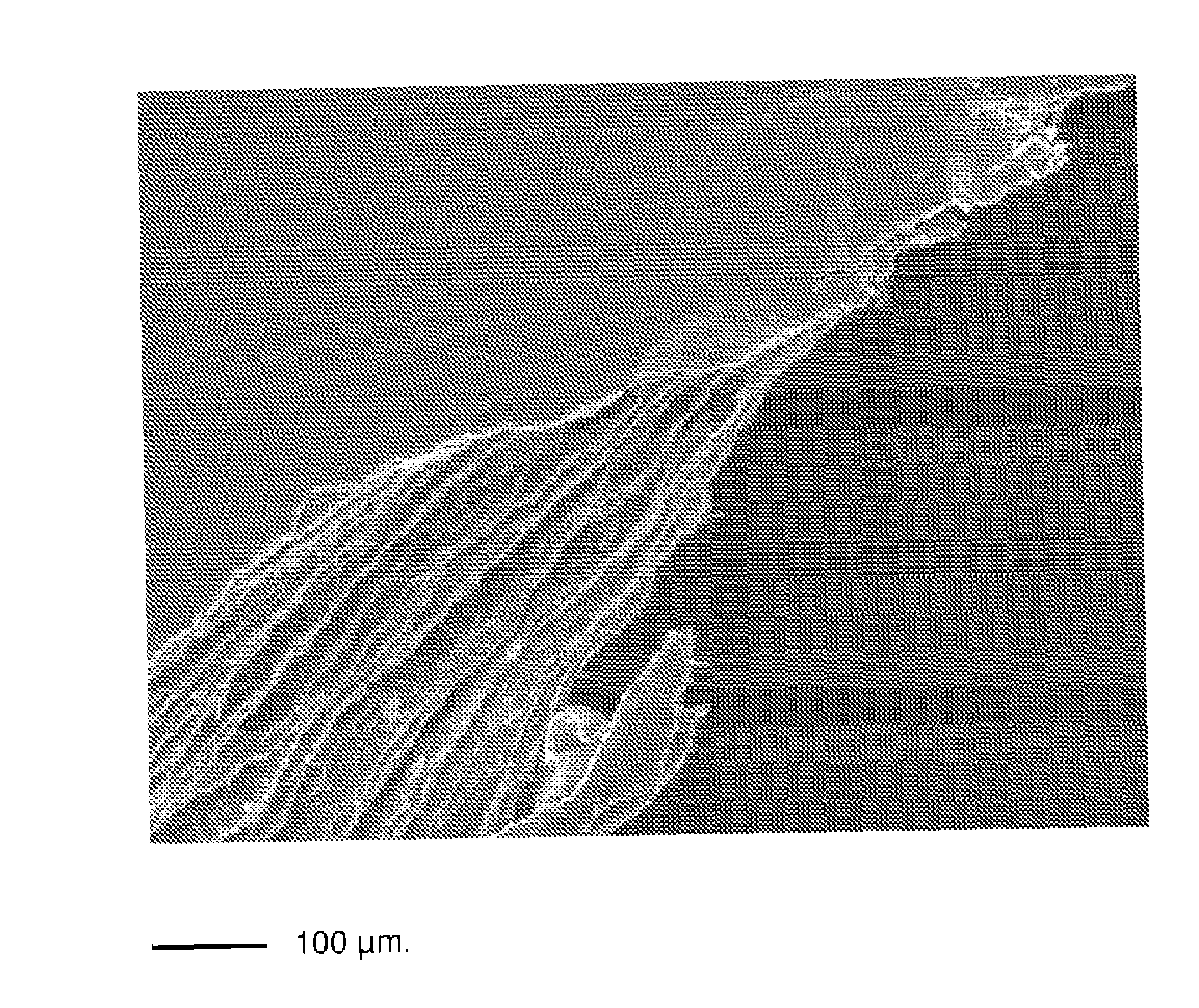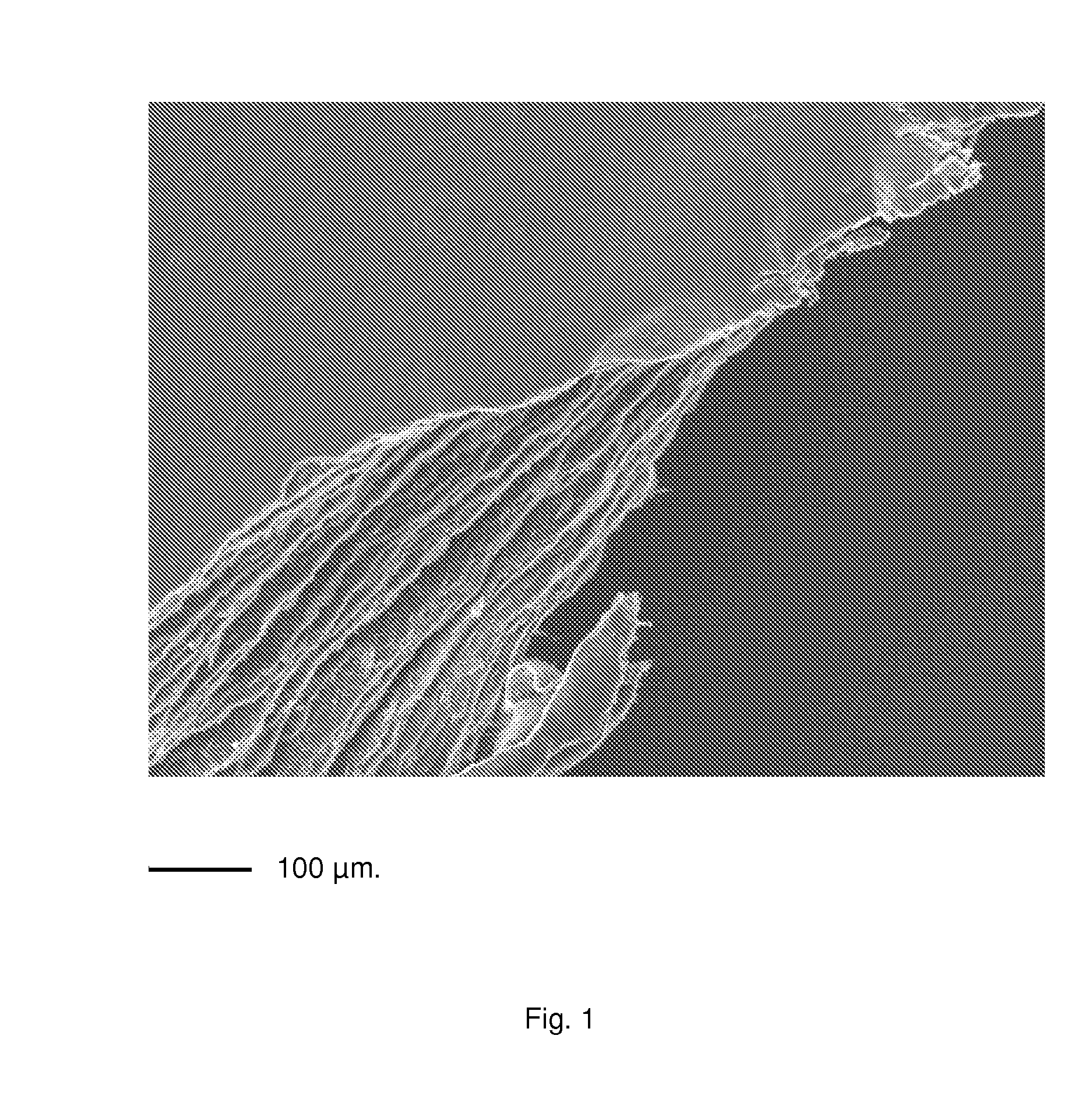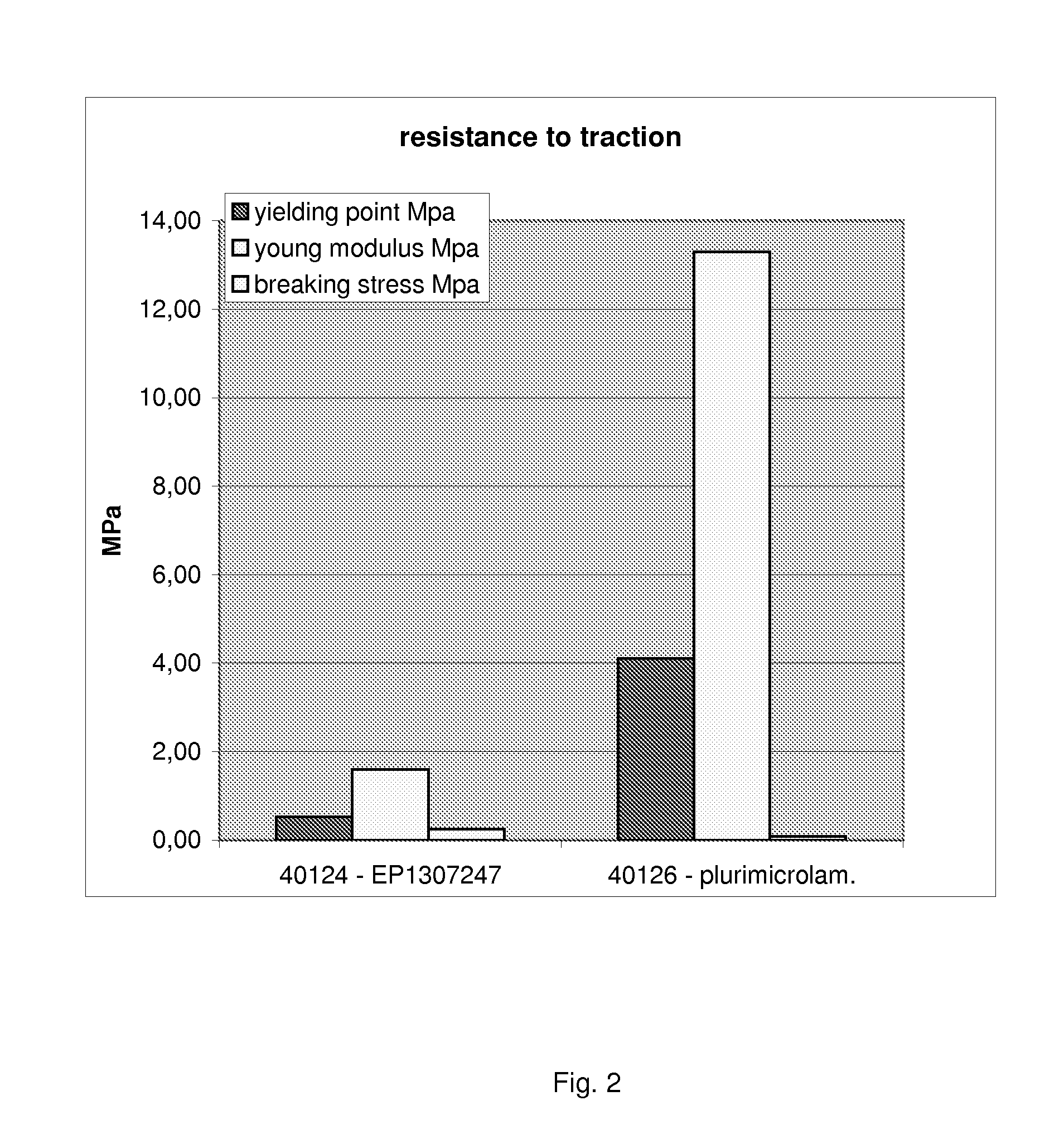Multimicrolamellar Collagen Membranes
a technology of collagen membranes and microlamellar cells, applied in the field of multi-microlamellar collagen membranes, can solve the problem of limited resistance of these membranes
- Summary
- Abstract
- Description
- Claims
- Application Information
AI Technical Summary
Benefits of technology
Problems solved by technology
Method used
Image
Examples
example 1
Preparation of Type II Collagen from Cartilage and Purification with Sodium Hydroxide
[0114]50 g of equine joint cartilage powder were repeatedly washed in water, drained and placed in 3 liters of water that were brought to pH 2.5 with hydrochloric acid solution. Five grams of pepsin were added to the suspension (10% of the starting cartilage) under mechanical stirring.
[0115]After about 20 hours at about 27° C., the suspension was again stirred repeatedly, filtered, and the fluid was collected, diluted to 3.75 liters and adjusted to pH 3.5 with few drops of a 2.5 N sodium hydroxide solution. 154.85 g of sodium chloride was added to the fluid to a concentration of 0.7M: after about 2 hours, a precipitate was formed consisting of very short (few mm) and thin fibers. The precipitate was collected on a cotton cloth by filtration under vacuum and subsequent centrifugation at 4500 rpm for 20 minutes, until a very concentrated suspension was obtained. An aliquot of the suspension (28 g) was...
example 2
Preparation of Type I Collagen from Equine Tendon and Purification with Sodium Hydroxide
[0121]An amount of 80 g of ground equine tendon was placed in 1 liter of water, left to swell for two hours, homogenized in a Sterilmixer Lab homogenizer. PBI: 0.81 g of pepsin were added to the suspension that was then brought to 10 liters with water. The pH was adjusted to 2.5 and the suspension was left for 23 hours at 20° C.+ / −2° C. After this time the suspension was again homogenized with a Sterilmixer and filtered on cotton cloth. The liquid filtrate was adjusted to pH 5.5 with 30% sodium hydroxide, resulting in precipitation of collagen fibers that were washed twice with water at pH 6. An amount of 304.55 g of wet fibers was recovered. From this material, 50 g were washed with water 2 more times and then dissolved in 0.3% acetic acid (they were brought to 180 g in order to obtain a 1% collagen concentration: the so-formed gel (050920 A) was repeatedly homogenized with a Sterilmixer and was...
example 3
Isolation of Collagen from Dermal Fibroblasts Cultured In Vitro
[0123]Human dermal fibroblasts isolated from skin biopsies of adult healthy subjects were cultured in plastic wells according to the conditions described in the section “materials and methods”. The cell culture medium was replaced according to a pre-arranged schedule, so that cells were always fed with fresh medium. The medium withdrawn from wells every 24 hours was collected and frozen at −20° C. Aliquots kept at −20° C. were thawed and pooled together: in total, 102.66 ml of culture medium were collected, containing products of cellular metabolism. The fluid was subjected to a process for the extraction of type I collagen, following the method described in example 2, with an appropriate resizing of the procedure. At the end of the process, 19.4 mg of wet fibers were obtained (which turned out to consist of type I collagen, by polyacrylamide gel electrophoresis) that were recovered in 50 microliters of 0.3% acetic acid:...
PUM
| Property | Measurement | Unit |
|---|---|---|
| constant temperature | aaaaa | aaaaa |
| constant temperature | aaaaa | aaaaa |
| constant temperature | aaaaa | aaaaa |
Abstract
Description
Claims
Application Information
 Login to View More
Login to View More - R&D
- Intellectual Property
- Life Sciences
- Materials
- Tech Scout
- Unparalleled Data Quality
- Higher Quality Content
- 60% Fewer Hallucinations
Browse by: Latest US Patents, China's latest patents, Technical Efficacy Thesaurus, Application Domain, Technology Topic, Popular Technical Reports.
© 2025 PatSnap. All rights reserved.Legal|Privacy policy|Modern Slavery Act Transparency Statement|Sitemap|About US| Contact US: help@patsnap.com



